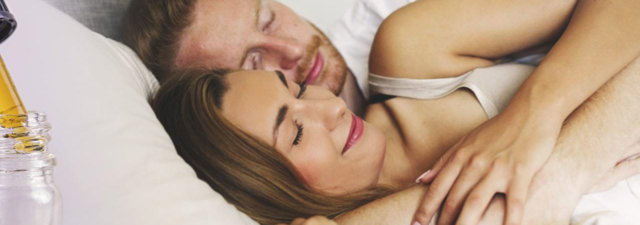Cannabidiol (CBD) is a non-intoxicating compound found in both cannabis and hemp. CBD interacts with the body’s endocannabinoid system and has the potential to help alleviate the symptoms of a number of medical conditions, such as chronic pain, epilepsy, anxiety, and depression.
Research is ongoing, but the early results are promising. And given CBD’s excellent safety profile, it has even been used in pets and children. (Epidiolex is an FDA-approved CBD medication for two forms of pediatric epilepsy. Unless prescribed by a doctor, cannabidiol should not be given to children).
A CBD oil tincture is one of the most popular methods of consuming cannabidiol – particularly among first-time users. CBD tinctures come in many different potencies (and even different flavors) and may produce different physiological effects compared to edibles, for example.
There is a school of thought suggesting that CBD administered orally via oil can provide improved absorption rates compared to edibles. And we know through the FDA’s approval of Epidiolex that oral CBD administration – i.e. in the form of a tincture – can work extremely well.
In addition to the Epidiolex clinical trials, other studies have shown medicinal uses for CBD tinctures. A 2016 report in The Permanente Journal, for instance, suggests that CBD tinctures can be effective for individuals suffering from PTSD-related anxiety and insomnia.
Since CBD tinctures are a relatively new product in a new market, interested users will continue to have questions. In this guide, we aim to provide reliable information on dosage, effects, usage, and even how to make your own CBD tincture at home.
CBD Tincture Dosage
To put it bluntly, there is no clinical resource (aside from Epidiolex prescriptions) that identify how to dose CBD tinctures. That said, it doesn’t have to be a complicated affair. The first thing you’ll want to do is identify why you’re using CBD. An effective CBD tincture dosage for pain, for example, may end up being different from an effective dosage for anxiety.
Without sufficient high-quality evidence in human studies, we can’t pinpoint effective [CBD] doses.
Dr. Peter Grinspoon, Harvard Health
Additionally, you’ll want to know and understand the strength (potency) of the specific tincture you intend to buy. CBD tinctures come in a massive range of potencies. You can find products with as little as 100mg of CBD, for instance, as well as products that contain 5,000mg or more in a single bottle.
Calculating Your Dosage
To calculate a specific CBD tincture dosage, you need to know two things: bottle size (mL) and total CBD content (mg). Most bottles come in a standard 30 mL size. A single dose (or “serving”) of CBD tincture is typically regarded as 1 mL, which is equivalent to 20 drops.
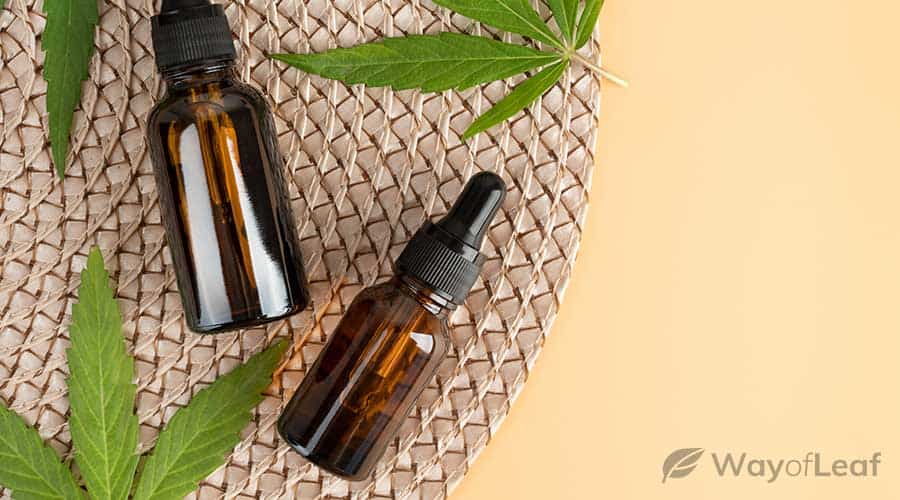
To know how much CBD you’re getting in a single 1 mL dose, first, calculate how many drops are in the entire bottle. If you’re using a standard 30 mL bottle, there will be 600 drops total (1 mL = 20 drops; 20 drops x 30 mL = 600 total drops).
Next, divide the total CBD content of the bottle by how many total drops it contains. For example, let’s say you’re using a 30mL, 600mg bottle of CBD tincture. You have 600 total drops of oil. 600mg divided by 600 drops equals 1mg per drop. So in a single 20-drop (1mL) dose, you’re getting 20mg of CBD.
Confused? Check out the link below for more detailed information on how to dose CBD tinctures.
Understanding the Basics
When using CBD, there are a few things to take into account. First, human beings are all different. This means that 20mg of CBD may not have the same effect on you as it does on someone else.
Also, we all have varying degrees of tolerance for CBD, and things like general health and genetics can play a role. Finding the best dose for your CBD tincture will likely take time, as well as a fair amount of patience. Start out a small, and stick with your initial dosage for several days before making changes. You want to make sure to give your body time to respond to the active compound.
Furthermore, be sure and speak with a doctor or healthcare professional before taking a CBD tincture along with other medication. Cannabidiol interacts with enzyme activity related to drug metabolism, so it may affect OTC or prescription med(s) that you may be taking.
Lastly, as is the case with most other chemical compounds, the effects of a CBD dose will likely depend on how much the user weighs. For instance, a 20mg dose will probably have more of an impact on someone who weighs 120 lbs than it will on someone who weighs 220 lbs.
It’s a bit unorthodox, but you may have to employ some trial and error in order to determine the best dose of CBD tincture for you personally.
CBD Tincture vs. Oil: Is a CBD Tincture the Same as CBD Oil?
Many people use the terms CBD tinctures and CBD oils interchangeably. But is a CBD tincture the same as CBD oil? While both CBD tinctures and CBD oil share lots in common, they are not exactly the same.
So, what are the differences between a CBD tincture vs. oil? The main difference is the method of extraction used to draw out the CBD from the hemp plant material.
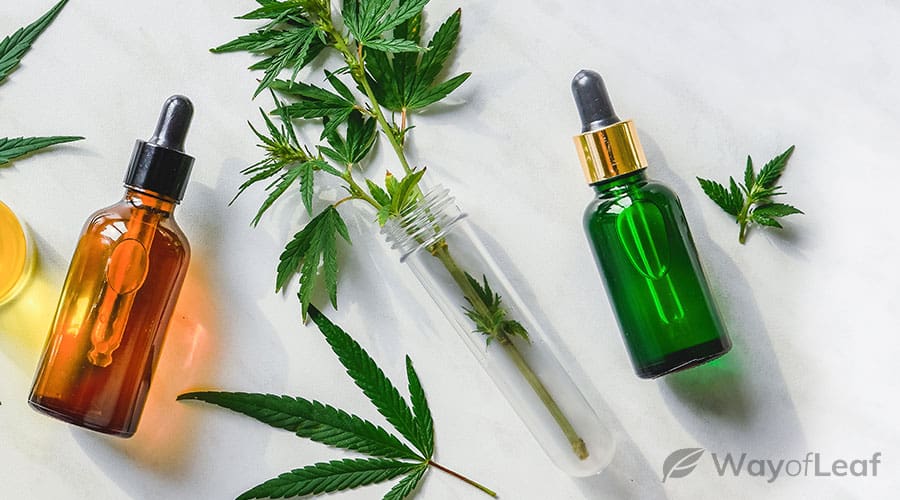
High-quality CBD oil is typically extracted from hemp using the industry gold-standard supercritical CO2 extraction method. By contrast, some CBD manufacturers use liquid solvents such as alcohol, (and to a lesser extent, vinegar or glycerin) to extract the cannabidiol for CBD tinctures.
For alcohol-based extracts, CBD is removed from the hemp plant material using high-proof alcohol as a solvent. This extraction method involves applying low heat for an extended period before the residual alcohol is evaporated via boiling.
In its dried-out form, CBD is a fine, white powder, so CBD brands add carrier oils such as MCT oil, hemp seed oil, or olive oil to their CBD tinctures and oils. CBD is naturally an oil-soluble molecule, not a water-soluble one, which is why carrier oils are necessary for absorption.
Now that we’ve looked at CBD tincture vs oil, you might be wondering, which CBD product is better? Read on to find out.
CBD Tincture vs. CBD Oil – Which Is Better?
When it comes to CBD oil vs. CBD tincture, is one better than the other at meeting your CBD needs? That is a very subjective question, as not everyone will be using CBD for the same reasons or will respond identically to CBD’s effects.
Furthermore, apart from the different extraction methods utilized, CBD tinctures and CBD oil are very similar products. Both are sourced from the hemp plant and are available as full and broad-spectrum options and CBD isolates. Many CBD brands offer these CBD products in different bottle sizes, with varying potencies and milligrams of CBD per serving.
We discussed how manufacturers use liquid solvents such as alcohol to produce the CBD extract for a tincture. Some alcohol-based tinctures can contain as much as 60-70% alcohol. Consequently, they have a very bitter taste, which is why manufacturers add flavorings, sweeteners, or vegetable glycerin to make them more palatable. However, one advantage of alcohol-based tinctures over CBD oil is that they have a longer shelf life, typically between three to five years.
When comparing a CBD oil vs. CBD tincture, it helps to look at the list of ingredients on their packaging, either online or in-store. You will see that both broad and full-spectrum CBD tinctures and CBD oils contain natural flavors and terpenes as well as carrier oils, such as MCT oil.
MCT stands for medium-chain triglycerides, and MCT oil is a type of fat found in foods such as coconut oil. CBD brands opt for carrier oils like MCT oil because they reportedly provide faster absorption.
We’ll discuss what kind of effects you can expect from a CBD tincture next.
CBD Tincture Effects
The effects of a CBD tincture can (and will) vary from person to person. What is a little more predictable is how long you might expect to wait before your body reacts to the active cannabidiol compound.
Of the three most popular forms of CBD (edibles, tinctures, vaping/inhalation), inhalation is the fastest-acting (followed by tinctures and edibles).
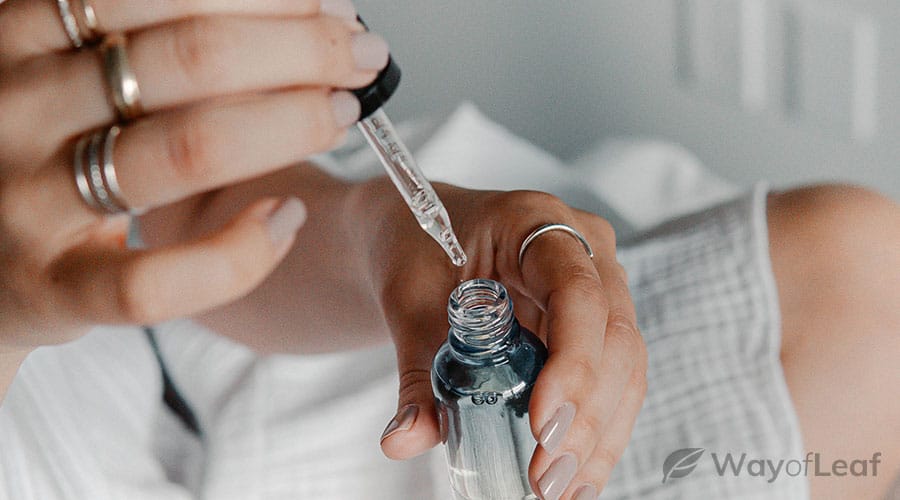
In terms of how long it takes for a CBD tincture to work, this can also vary. Some people notice effects in as little as 15 minutes, while others may have to wait up to 45 minutes or more. In comparison, the effects of inhalation can be noticeable within minutes.
CBD tinctures can work very well for chronic pain, stress, anxiety, etc, but as we pointed out, specific effects will vary.
Once the CBD takes effect, you will not feel the high that’s associated with THC. THC modulates neurotransmitters, thereby producing noticeable psychoactivity. CBD interacts differently in the endocannabinoid system, so you should feel calm and free from anxiety. The precise feeling, however, will depend on a variety of biochemical factors.
What we can tell you is that CBD will not impact your perception, behavior, or sensory awareness in the way that high-THC marijuana does. Many users feel relaxed after taking CBD, while others have reported a notable increase in energy and focus. Each person’s endocannabinoid system will react slightly differently to the cannabinoid, so it is worth keeping a CBD journal to monitor your results.
CBD Tincture Side Effects
It would be remiss to suggest that CBD tincture side effects don’t exist. While many consider hemp CBD tinctures safer than pharmaceutical painkillers, there are a handful of adverse effects associated with cannabidiol. According to Harvard Health’s Dr. Peter Grinspoon, these negative effects can include:
- Nausea: While many take CBD tinctures to help ease the symptoms of nausea, it has produced increased nausea in some individuals.
- Tiredness: This typically happens in higher doses, but fatigue can be a side effect of any CBD tincture dose.
- Irritability: Few clinical publications discuss CBD-related irritability, but Dr. Grinspoon mentions it as a potential side effect in the Harvard Health Blog.
- Interaction with Drug Metabolism: CBD can inhibit the activity of the cytochrome P450 enzymes. This enzyme family metabolizes most pharmaceutical drugs; if you take doses of CBD, it may neutralize P450 activity and change the way drugs metabolize in your body. (For the record, eating grapefruit has the same effect!).
How to Make a CBD Tincture
For those looking to make a CBD tincture of their own, it can be done using basic kitchen equipment. Really all you need is a jar, a strainer, high-proof alcohol, a heat source, and (obviously), some CBD. You can use high-CBD cannabis flower, hemp flower, or even CBD isolate in the form of crystals.
If you’re using cannabis or hemp flower as your CBD source, you’ll first need to decarboxylate the flower. You can do this by placing the plant material on a baking sheet in an oven at 220 degrees Fahrenheit for about 45 minutes.
Next, mix the flower with high-proof alcohol such as Everclear in a mason jar. Close the jar tightly and allow it to sit. The alcohol solvent will “pull” the CBD (as well as other compounds) from the plant material.
If you do this at room temperature, you must let the flower/alcohol mixture sit for a few weeks to obtain efficient CBD extraction. If you heat the mixture in a water bath, full extraction can occur in as little as a few hours.
Finally, use a coffee filter to strain the mixture (and let it cool down!) before consuming it. Begin with a 1 mL dose to see how potent it is. If you’re trying to make CBD tincture without THC, you’ll need to know the cannabinoid profile of the strain you’re using. Charlotte’s Web is one of the most famous high-CBD, low-THC strains around.
Cryogenic Solvent-Based Extraction
If you don’t like the method mentioned above, you can try a cold extraction method that uses glycerin. Cold extraction preserves the terpenes of the cannabis, while the glycerin is sweet and can improve the taste of your CBD tincture.
Grind at least one ounce of high-CBD flower in a blender or coffee grinder, then place it in a mason jar along with food-grade glycerin. The amount of glycerin you use will ultimately determine how your tincture tastes.
Close the lid tightly, then allow it to marinate in the freezer for several weeks (making sure to shake it once a day). When you’re ready to proceed, strain the tincture in a sieve and pour it into a dropper bottle. Keep it in the fridge and use small doses initially to test its potency.
How to Use a CBD Tincture
CBD tinctures are easy to use, though it can feel odd at first to hold the oil under your tongue. Using the bottle’s dropper cap, squirt a full serving (as indicated by the specific product you’re using) below your tongue. For efficient absorption of the CBD, wait at least a minute before swallowing.
The goal of learning how to use a CBD tincture is to find your body’s minimum effective dose. Begin with a low potency tincture (see above), and gradually trend upwards until you notice positive effects. Once you feel adequate effects, stop increasing the dose. The more you increase, the more you risk developing a tolerance.
We all react differently to CBD. And as we discussed above, there is a slight chance your CBD tincture can cause negative effects. Or, it may not work at all.
If nothing happens, increase your dosage and ‘test’ the effects for a couple of weeks. You can take a dose once a day, twice a day (morning and evening), or even three times a day (morning, afternoon, evening). Whatever you decide, be patient and stick with your initial plan.
Some people who don’t like the taste of CBD tinctures will try adding it to food or water. This can work, but understand that your body will absorb less of the compound when you eat or drink it (compared to letting it absorb under your tongue).
A lot of CBD brands produce tinctures in various flavors, so bear this in mind if you have sensitive taste buds!
Benefits of CBD Tinctures
All in all, there is an increasing body of research suggesting that CBD (and other cannabis compounds) can provide health benefits. And of course, an enormous array of anecdotal evidence already exists to supplement this newfound data.
When purchasing pure CBD tincture, however, make sure to do your research and choose a quality product from a reputable brand. Look for an oil that has a full spectrum of terpenes, flavonoids, and cannabinoids. Including these compounds promotes the ‘entourage effect,’ which may improve the efficacy of the tincture.
Among other things, quality CBD tinctures may provide:
- Relief from pain and inflammation
- Improved mood
- A reduction in nausea
- A feeling of relaxation and calm
What Products Are Not CBD Oils or Tinctures?
If you’re new to the world of CBD, then you might not know that there are lots of CBD products other than a CBD oil or tincture. We list the most common ones below.
CBD Edibles
Some people find the bitter taste of natural CBD oil quite off-putting. The good news is that there are lots of tasty alternatives out there, such as CBD gummies. Many CBD brands offer THC-free CBD gummies in a variety of flavors, and these are a delicious way to meet your CBD needs.
Other CBD edible options include CBD honey sticks, beverage enhancers, cookies, and chocolates. There are even CBD-infused protein balls for consuming after a workout.
CBD Capsules
CBD capsules are a convenient and easy-to-use alternative to a CBD oil or tincture as you simply swallow one with a glass of water. Each one contains the same amount of CBD, making dosing much more straightforward as you know exactly how much you are taking each time you consume a capsule.
One drawback to capsules is that they have to be digested before the CBD is absorbed. Whereas taking CBD sublingually (under the tongue) offers more efficient absorption, and therefore, a faster route to the bloodstream.
CBD Topicals
These CBD products are designed to be applied to the skin for transdermal absorption. There are a wide variety of CBD topicals available, including CBD creams, lip balms, roll-ons, ointments, and transdermal patches.
CBD Vapes
CBD vaping is another popular alternative to a CBD oil or tincture. The most common method of vaping CBD juice is using a disposable or refillable CBD vape pen. However, there are desktop vaporizers available, too.
Whether it be a CBD oil or tincture, or any of the alternatives CBD products listed above, we recommend opting for market-leading CBD brands. By doing so, you can be confident that you are not just getting quality but also safe and effective CBD products.
A Final Word on CBD Tincture Effects
Proponents of CBD oil tinctures routinely praise their ability to help with the symptoms listed above. Whether you buy online, from a store, or make your own, you’ll understand the effects of CBD tincture when you notice the subtle fading of whatever is troubling you.
And finally, when looking for a CBD oil tincture be sure to look for a Certificate of Analysis (COA) or lab report which proves the content of the product. The 2018 Farm Bill legalizes the commercial production of hemp, and we hope that this increase in availability results in an increasing number of people that experience positive effects with CBD tinctures.


![What Is Terpsolate? [Explained for Dummies]](https://wayofleaf.com/wp-content/uploads/2019/06/wol_what-is-terpsolate-640x225.jpg)
![What Are Cannabis Cones? [The Comprehensive Review]](https://wayofleaf.com/wp-content/uploads/2019/04/wol_what-are-cannabis-cones-640x225.jpg)


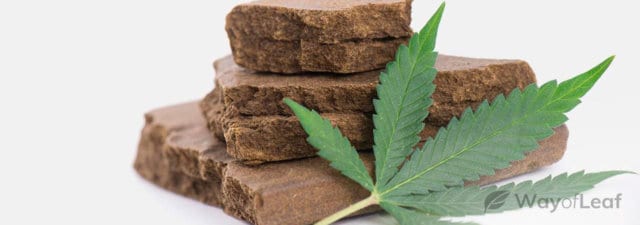
![CBD Bath Bombs [What They Are and How to Use Them]](https://wayofleaf.com/wp-content/uploads/2019/04/wol_1920x450-37-640x225.jpg)
![What Are Dabs? [Your Complete Guide]](https://wayofleaf.com/wp-content/uploads/2019/01/mj_what-are-dabs-640x225.jpg)

